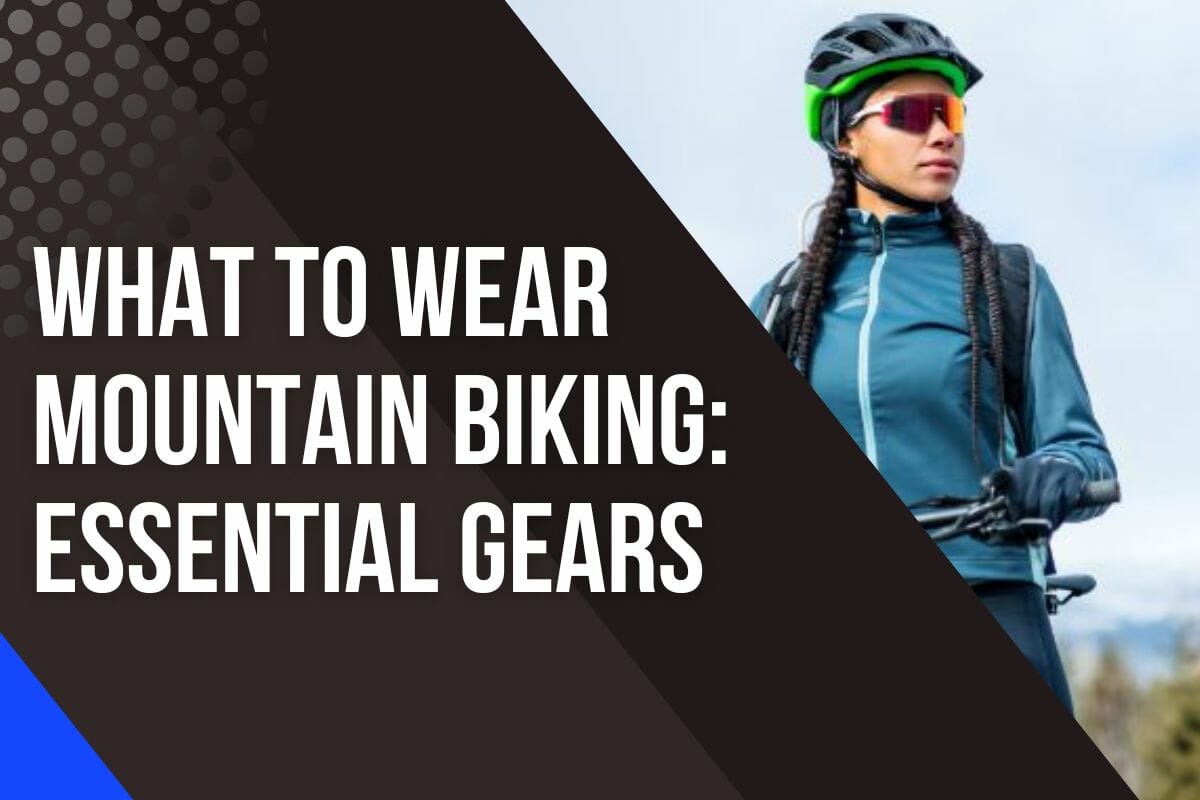Do I Need A Base Layer For Cycling?

Are you looking for a way to stay cool and comfortable while cycling?
If so, then a base layer might be exactly what you’re looking for.
From thermoregulatory responses to how they can impact your exercise in the heat, this article dives into why they are an important part of any cyclist’s wardrobe.
So, grab your bike and get ready to learn all about the power of base layers!
What Is A Base Layer?
A cycling base layer is the first layer of clothing worn underneath other garments to provide insulation.
They come in different weights depending on the climate and activity level.
Base layers can be used for many activities including biking, running, skiing or even just lounging around at home.
Why Wear A Cycling Base Layer?
There are numerous benefits that come with wearing a cycling base layer under cycling jersey, such as temperature-regulating properties, moisture-wicking capabilities, and protection from road debris.
Base layers help cyclists maintain a comfortable body temperature while they’re riding, especially during colder months.
They also provide added insulation against wind chill and keep sweat away from your skin so you remain dry throughout your ride.
This helps prevent chafing and discomfort caused by wet clothes sticking to your skin, making sure every ride is enjoyable.
The material used in cycling base layers wicks moisture away from the skin quickly and efficiently which keeps riders cool on those hot summer rides.
The moisture-wicking fabric allows airflow between the garment and your body allowing heat to escape more easily than cotton or other materials would allow.
The breathability of these garments also means that even when you’re working hard up hills, you’ll still feel comfortable.

During the summer months, a lightweight and breathable sleeveless or short-sleeve base layer helps keep me cool by wicking away sweat and allowing it to evaporate more effectively.
During the winter, I opt for an extra layer like a long-sleeve merino wool or synthetic base layer.
Not only does this keep me warm in cold conditions, but also provides an added layer of protection against wind chill.
Additionally, some base layers come with thumb loops to provide extra warmth without having to shift around due to my riding position.
What Are Base Layers Made Of?
There are three main types of materials used in base layers: synthetic, merino wool, and thermal.
Synthetic base layers are usually the most affordable option and come in various weights depending on how much warmth you need.
They provide good moisture management and dry quickly but don’t offer as much insulation as other fabrics.
Synthetics also tend to have a shorter lifespan than natural fibers like wool or silk.
Merino-wool base layers can be more expensive but provide excellent warmth even when wet, making them ideal for cold-weather rides.

Merino wools are naturally odor resistant too so you won’t have to worry about smelling after long rides!
Wool is also incredibly breathable and helps regulate your body temperature by wicking away sweat from your skin.
Thermal-base layers aren’t just for winter riding – these lightweight garments help keep you cool during hot summer days as well!
Unlike synthetics, thermals have an open weave structure which allows air to pass through easily while still providing extra insulation against the elements.
This makes them great for layering under your jersey or jacket without adding bulkiness or weight.
In short, no matter what type of ride you’re doing there is a cycling base layer out there that will suit your needs perfectly.
Do Summer Base Layers Actually Work?
Can a base layer really make that much of a difference in the summertime? After all, heat isn’t an issue—or is it?

Despite the temperature outside, there are still plenty of reasons why cyclists should consider wearing a base layer even during the summer months.
Here are four:
- The lightweight material can help prevent sweat-induced chafing
- It can provide protection from the sun’s UV rays
- The fabric also acts as an extra barrier against wind chill
- Keeps you warm on cooler days
So while summer may not seem like the best time for base layers, they do work to improve comfort and performance overall.
There is not much scientific research done in this area, but I managed to find some.
Below are the citation and key findings. Feel free to skip to the next section if you’re not interested in the nitty gritty scientific details.
Thermoregulatory Response to Base-layer Garments During Treadmill Exercise
Bryan C. Roberts, Tom M. Waller, and Mike P. Caine published a study in 2007 concerning how base-layer garments affect thermoregulatory responses during treadmill exercise. (1)
The study tested bare skin and two types of base layers: hot weather and cold weather versions.
The results found that the torso skin temperature remained lowest when running bare-chested, yet the hot weather base layer was only slightly warmer than the bare skin and still allowed for body cooling close to its level before wearing it.
The surprising result was that with cold weather clothing the torso temperature ended up being substantially higher but with effectiveness at cooling far greater than it would have been when wearing just a 100% cotton t-shirt instead of a base layer.
The authors draw attention to an important caveat when interpreting these results: this study focused on runners and not cyclists.
Whether these same effects will apply to cyclists is subject to further research; some scholars posit that biking may present different issues when it comes to heat regulation due to more exposure to certain anatomical features such as legs or arms.
Impact of Clothing on Exercise in the Heat
The impact of clothing on exercise in the heat has been a long-standing topic for researchers and athletes alike.
Kyle Daniel Davis and Phil Bishop have published a study that investigates the effectiveness of clothing when riding a bike in intense heat. (2)
Their findings indicate that air velocity plays an immense role in cooling overall, accounting for anywhere between 5-46% of total cooling achieved while exercising.
Surprisingly, their research also suggests that adding an additional layer of clothing doesn’t necessarily equate to increased cooling effects, as multiple layers create “microenvironments” which can impede airflow and ultimately increase heat due to trapped sweat.
Based on the results of the research, it appears that wearing only one layer is just as effective—or even more effective—than wearing multiple layers when exercising in extreme heat.
Additionally, there appears to be absolutely no difference between natural fabrics like Merino wool and synthetic fabrics like nylon when trying to maximize cooling.
Real Evaporative Cooling Efficiency of One-layer Tight Fitting Sportswear in a Hot Condition
This study by Wang et al. examined the real evaporative cooling efficiency of one-layer tight-fitting sportswear in a hot condition. (3)
The authors found that there is a linear decrease in the effect of evaporative cooling as sweat is transported away from the skin to clothing or other layer materials.
This shows why the distance from the skin to the evaporation point matters, and further confirms that more distance between these two points equals less cooling overall.
They also inferred that the thinner the base layer fabric, the better it will be for cooling purposes.
Herein, they determined that although clothing can provide some level of evaporative cooling, bare skin still gives you the most efficient form of refrigeration in a hot condition; making it an important safety precaution when exposing yourself to heat stress conditions such as exercising in high temperature and humidity levels.
The findings of this study have important implications for heat regulation while exercising outdoors in particular during summer months when temperatures tend to rise significantly.
In this case, taking into account the real evaporative cooling efficiency of one-layer tight-fitting sportswear could prevent extensive fatigue or excessive dehydration characterized by athletes who compete regularly in outdoor sports during summertime or hotter climate conditions.
When Should A Base Layer Be Worn?
Having experienced the benefits of wearing a base layer during cycling, I highly recommend investing in a quality one for any weather condition.
Even on hot days, a lightweight base layer can help regulate body temperature and keep you cool.

During cold conditions, thicker merino wool or the synthetic base layer will provide an extra layer of protection against the chill without the bulkiness of layers like jackets and vests
And for those long rides, consider adding thumb loops to your sleeves for additional coverage and warmth.
It’s important to remember that both too much heat and too much cold can make riding uncomfortable so having options that are tailored to different types of rides and weather conditions can help ensure an enjoyable experience each time you get on two wheels.
How Should A Cycling Base Layer Fit?
The most important thing to remember when sizing up for a cycling base layer is fit and comfort.
You want something snug enough to keep you warm in cold conditions, but not tight enough to constrict movement or cause chafing.
The neckline should also be low cut so it won’t rub or cause discomfort.
To make this work, check out sizing charts online or consult with a salesperson at your local bike shop.

They’ll help guide you through measurements such as chest circumference and arm length so you can find the perfect size.
Another key detail is fabric choice – different materials offer varied levels of stretch and breathability which can affect overall fit and feel.
As well as looking into technical specs on each product page before purchase, it might also help to read some customer reviews and see what other riders have said about their own experience with particular fabrics.
Final Thoughts
When it comes to cycling, a base layer can be incredibly beneficial for both amateurs and professionals alike.
It serves as an extra layer of protection between your skin and the elements, helping you stay warm in cooler weather and cool in warmer weather.
In addition, wearing a properly fitted base layer while cycling will help keep your body comfortable by wicking away sweat and keeping you dry during long rides. A quality base layer gives you peace of mind knowing they’re prepared for whatever Mother Nature throws their way.





